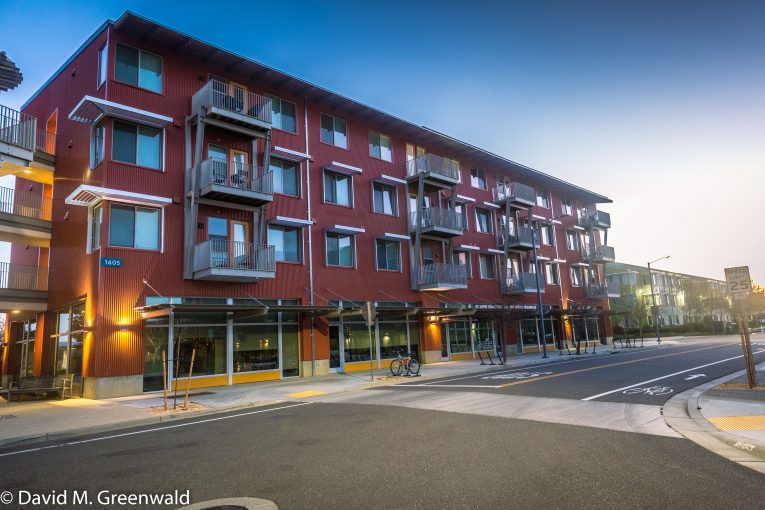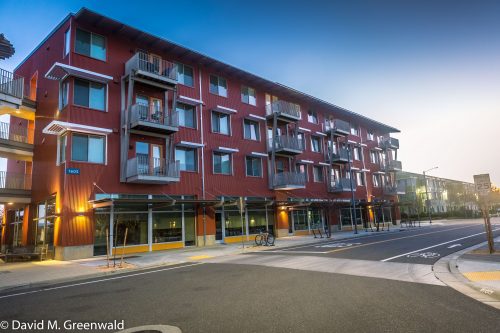

We have been skeptical of a notion of an agreement with UC Davis – in part because we believed that the process to get to that point would be confrontational. Instead, it was almost a matter of course. When UC Davis finalized and the UC Regents approved the Long Range Development Plan (LRDP), the city had legitimate concerns about the timing, and the amount and assurances of the build out for student housing units.
Instead of going the confrontational route however, the university, city and county all agreed to meet with a mediator and undergo a process. That process very quickly and seemingly amicably led to an agreement that was binding and enforceable and they did it without creating a confrontational process that would lead to hard feelings and bitterness. In many ways, that alone makes this agreement a win-win.
While some have continued to push the university to get to 50 percent of students housed on campus, for many, the bigger deal was – whether that number was actually 48 percent or 50 percent – unless we have guarantees that the housing gets built by a certain time, the agreement lacks real teeth. The problem of past LRDPs and even MOUs has been that the university did not deliver what it was promised and there was no mechanism by which the community could compel them to do so.
Now, at least for the first wave of housing, we have a timeline and a firm commitment. This is by no means perfect, but it is a start.
By the fall of 2023, the university is committing to build about 5200 new beds on campus.
There is an agreement to go further: “The university commits to provide on-campus housing for 100% of the actual student population in excess of the baseline enrollment number of 33,825 students…” They also agree, “In the event the actual number of newly enrolled students, as defined above, surpasses the number in the 2018 LRDP EIR projection stating the fall of 2023, University  will meet and confer with City and County to establish a plan to ensure the commitment to house the additional new students.”
will meet and confer with City and County to establish a plan to ensure the commitment to house the additional new students.”
They also agree, should they fall short of their commitments, to pay up to $500 each to the city and county for every bed that is not delivered within six months of the agreed upon date.
Think about that – if they fall 1000 beds short, that is $500,000 each to the city and county.
As Vice Chancellor Kelly Ratliff points out: “This agreement keeps us on track to build substantially more housing over the next several years, which we outlined in the LRDP, and ends master leases in the City.”
Where the university, I think, falls short here is that they don’t account for the rest of the 9050 beds to be built between 2023 and 2030. Moreover, there is no timeline for them to be built.
But they put into the MOU this commitment to build 9050 beds above the current baseline of 9818 beds and “conduct preliminary planning work for projects sufficient to create housing for up to 48% of the total student population projected in the 2018 LRDP on the University campus.”
Another big deal is the elimination of master leases in the city. The main agreement: “With the completion of the West Village Expansion project, which is scheduled to open starting in the fall of 2021, University shall end any existing master leases for off-campus apartments in the city of Davis.”
Moreover, once that is completed, the university has agreed not to seek additional master leases of apartment buildings in Davis for the duration of the 2018 LRDP.
Furthermore, they have agreed to waive student housing master lease tax exemptions: “For the purposes of entering into this MOU only, and on an exceptional basis, the University will waive its right to seek a property tax exemption for any residential master leases within the City of Davis commencing with the 2019-2020 academic year.”
This has been a source of frustration for the city, because the university has not only reserved apartment space in this manner, but has prevented the city from acquiring property tax revenue from the properties they have master leased. Both practices will end shortly.
Is this a perfect solution? It never is. You have to give to get, although it does seem like the city got most of what it needed and a lot of what it wanted.
It is interesting that the agreement comes out the same week as the Affordable Student Housing Task Force report.
A lot of officials have credited Chancellor May in seeing the big picture here.
In the release, he stated, “UC Davis is pleased that we’ve reached an agreement with the city of Davis and Yolo County regarding our Long Range Development Plan. Our aim was to make sure the agreement will have a positive impact for our students, and this one will.”
He added, “Increasing on-campus housing will benefit our students, but also Davis, the county and the region at large. We value our town-gown relationship and look forward to continuing to strengthen our areas of shared interest.”
For me this addresses most of the concerns I had coming out of the 2018 LRDP.
UC Davis ultimately stuck with the number 9050 rather than going up to 10,000. I know some have held out for 10,000 and I can understand that. Clearly, that was a point that UC Davis was going to stick to their guns on. When I pressed some of them a few months ago, they didn’t feel like they could reasonably get to that number in the time that was the LRDP.
That is a point that seems to be lost on many in the community. UC Davis is going from about 28 percent to 48 percent in 10 years. That’s a big lift. Even getting to 9050 seems like it is going to be haul.
We don’t actually have the timeline for last the 4800 or so beds. They’ve committed to do them some time between 2023 and 2028, but, at this point, they can’t commit to time or location.
However, the big thing is that they have agreed to do this in writing and if they fall short, there will be consequences that are known and enforceable.
For me, the best thing is that we come out of this process, I think, with a stronger rather than a weaker relationship with the university and hopefully that will mean a better chance of working together on things like economic development.
—David M. Greenwald reporting
Get Tickets To Vanguard’s Immigration Rights Event


Fancy that. A cooperative approach works where a confrontational one has not. Who would have ever thought that was possible?
Tia: I would think that the “cooperative approach” worked at least in part because there was potentially a “confrontational approach” lurking in the background. And, everyone knew that.
Maybe. But it really seemed like all sides wanted to get this done. The city got an awful lot out of. The one area that I’m still concerned about is those last 4800 beds, that’s the place where I was worried about before and it remains unresolved. There’s no real stick there.
Struck with the irony and dichotomy… here some look for ‘a stick’… for WDAAC, folk are looking for iron-clad guarantees… it is what it is…
Because it’s a big, round number; that otherwise means absolutely nothing.